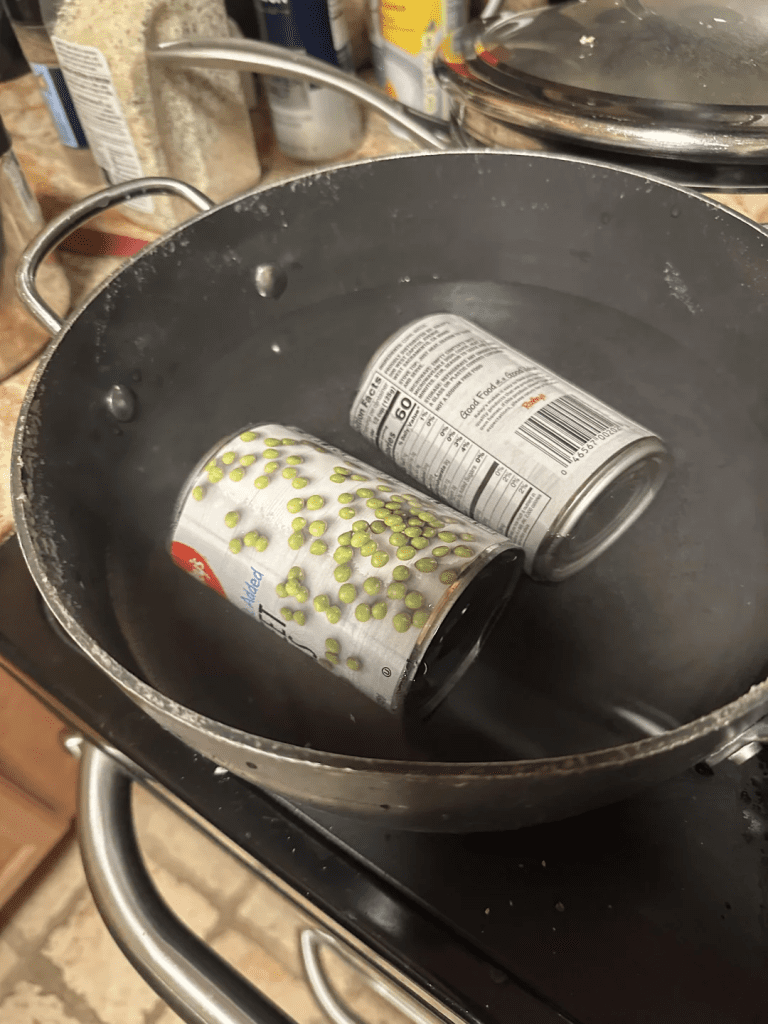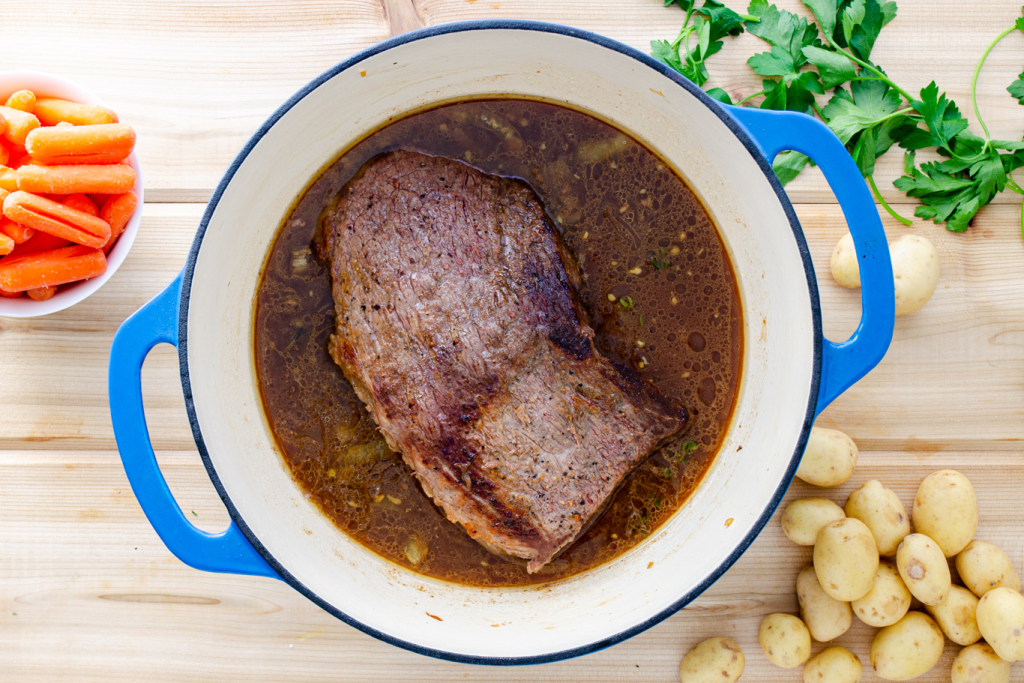Canned food has long been a staple in many households due to its convenience, long shelf life, and easy storage. However, the way we prepare canned food can vary from person to person. One practice that’s raised concerns among food safety experts is boiling canned food directly in the can. Despite your neighbor’s insistence that it’s a safe method passed down from her sister, this practice carries potential risks. In this article, we’ll dive into whether boiling canned food in its can is really safe, particularly focusing on chemical leaching and the importance of proper food preparation.
What Is the Practice of Boiling Canned Food in the Can?

Boiling canned food in its can is a method often used to heat food quickly with minimal cleanup. It’s convenient, especially when camping or in situations where traditional cookware isn’t available. For some, it may even feel like a simple, practical solution to getting dinner on the table. However, what might seem like a harmless shortcut can present significant health and safety risks, particularly when it comes to the potential leaching of harmful chemicals into your food.
The Risks of Boiling Canned Food Directly in Its Can
Boiling canned food directly in its can is not without its dangers. The primary risks associated with this practice include chemical leaching, potential can explosions, and uneven heating. Let’s take a closer look at each of these issues:
1. Chemical Leaching: The Hidden Danger
The biggest concern when boiling food in its can is chemical leaching. Most canned goods are lined with an epoxy resin that helps preserve the food inside, but some of these resins contain harmful chemicals like Bisphenol A (BPA). When the can is heated, these chemicals can leach into the food, particularly when exposed to high temperatures. This is a serious issue because chemicals like BPA have been linked to a range of health problems, including hormonal disruptions, cancer, and developmental issues.
2. Risk of Can Explosion
Another danger of boiling food in its can is the potential for the can to explode. When you heat a sealed can, the contents inside can produce steam and gas. This pressure buildup can cause the can to burst, leading to injury or damage to your kitchen. The explosion is not only a safety concern, but it can also lead to the loss of food, as well as a big mess to clean up.
3. Uneven Heating of Food
Boiling a can on the stove doesn’t ensure even heating of the food inside. The heat may not reach all areas of the can uniformly, leaving some portions of the food undercooked. Inconsistent heating can be particularly dangerous with certain types of canned food, as undercooked food may harbor bacteria or other pathogens that can lead to foodborne illnesses.
Debunking the Myth of Safe Canned Food Preparation
Many people mistakenly believe that canned food is safe simply because it is sealed and preserved in a can. While canned foods are generally safe when stored and handled correctly, heating them improperly can introduce new risks. For example, some may argue that because boiling the can hasn’t caused immediate harm, it must be safe. However, the potential long-term health risks of consuming food that’s been contaminated with harmful chemicals like BPA are far from negligible.
It’s also important to remember that the preservation process used in canning does not account for the risks of improper heating. Just because food is in a sealed can doesn’t mean that it’s immune to the dangers of leaching or uneven cooking when subjected to high heat.
Safer Ways to Heat Canned Food
Instead of boiling canned food directly in its can, there are safer methods for heating it. These alternatives not only eliminate the risk of chemical leaching but also ensure that your food is evenly heated and safe to eat.
1. Transfer the Food to a Pot

The safest and most straightforward method for heating canned food is to transfer the contents to a pot. This allows you to control the temperature and avoid the risks associated with heating the can itself. Simply open the can, pour the contents into a pot, and heat it on the stove until it’s warm. This method ensures even heating, eliminating the risks of undercooking and helping you avoid the dangers of chemical leaching.
2. Use the Microwave
Another easy and safe method is to use the microwave. For this, you’ll need to transfer the canned food to a microwave-safe container. Heating in the microwave is fast and efficient, but it’s important to stir the food occasionally to ensure that it heats evenly. This method is especially helpful for small portions of canned food.
3. Consider Using a Slow Cooker
For those who have more time, a slow cooker is a great alternative to boiling canned food in the can. Simply transfer the food to the slow cooker and let it heat on low for several hours. This method is particularly useful if you’re preparing a larger meal and want to ensure the food is evenly cooked without worrying about harmful chemicals or an explosion.
Why Food Safety Matters

Food safety is crucial in preventing foodborne illnesses and maintaining overall health. The way we prepare food can affect its safety, and certain cooking methods may introduce risks we don’t immediately recognize. By choosing proper food preparation methods, we not only enhance the flavor and texture of our meals but also safeguard our health. Improperly heated canned food, whether through chemical leaching or uneven cooking, can put you at risk for exposure to harmful substances or pathogens.
How to Approach the Conversation with Your Neighbor
Discussing food safety concerns with a neighbor or loved one can be delicate, especially if they’ve been using a particular method for years. The key to a productive conversation is approaching the subject with empathy and understanding. Rather than criticizing their method, focus on sharing helpful information. For example, you could gently explain the potential dangers of chemical leaching and offer alternative methods that ensure both safety and convenience. Providing credible sources or suggesting a friendly cooking demonstration could also help in making the conversation more positive and productive.
Conclusion: Safer Cooking Practices for Better Health
While boiling canned food directly in its can may seem like a convenient option, the risks associated with this method—such as chemical leaching, the potential for can explosions, and uneven heating—are too significant to ignore. By choosing safer cooking methods like transferring the food to a pot, using the microwave, or employing a slow cooker, you can enjoy your canned food without compromising your health. Remember, when it comes to food safety, it’s always better to take a little extra time and ensure that your cooking methods are safe, effective, and free from harmful chemicals.


